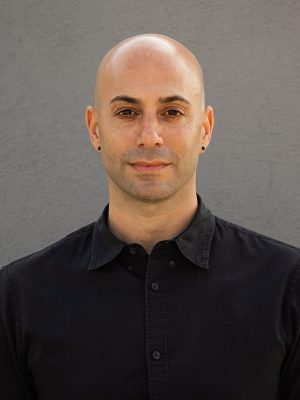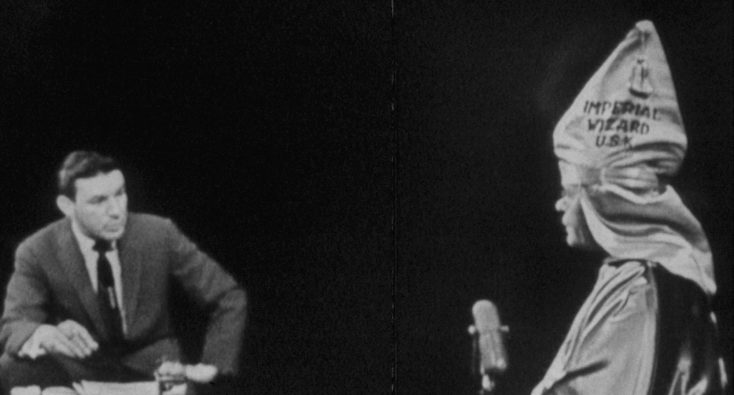
By ANGELA DAWSON
Front Row Features
HOLLYWOOD—Israeli filmmaker Avi Belkin has been making films since he was a youth, having been trained at the Midrasha film school before embarking on a successful career as a documentarian in his home country. His first documentary feature, 2014’s “Winding,” won the best picture in its category at the Haifa International Film Festival.
About three years ago, Belkin decided to move to the U.S., and as he was looking for the right subject matter to tackle, he landed on the idea of Mike Wallace, the noted broadcast journalist known for his hard-hitting, no-holds-barred interviews on the award-winning newsmagazine show “60 Minutes.” It was a decision based on the growing mistrust of the media by the general public.
“I was focusing on the question of how we got here,” he recalls by phone. “It was before Trump got elected but it already seemed like journalism was in a very bad place. I was looking for a genesis story that could tell a bigger story. I was looking for a story that could tell the bigger story of broadcast journalism through it.”
As he delved into the subject, he kept coming across Mike Wallace interviews, so, he decided that by filming a Mike Wallace portrait, he could do a story about broadcast journalism through that.
The result is “Mike Wallace is Here,” a carefully researched study of a broadcast journalism pioneer, whose interviews with a wide range of public figures over four decades ranged from celebrities to heads of state, from crooks to beloved icons. Using archival footage as well as present-day interviews with those who knew and worked with him, Belkin also probes deep into Wallace’s personal life—his multiple marriages, the loss of his teenage son, his bouts with severe depression and his overriding commitment to work, above all else. The film arrives in theaters Friday, July 26.
Belkin, 38, also has been busy working in conjunction with Blumhouse on a new docu-series for SundanceTV (AMC Network) called “No One Saw A Thing,” premiering Aug. 1. Belkin directs and serves as an executive producer on the six-episode series, which is executive produced by horrormeister Jason Blum along with Jeremy Gold and Marci Wiseman. The series examines an unsolved murder in Skidmore, Mo., a small town where nearly half the population witnessed the killing of the so-called town bully, and yet the case remains unsolved because of a reluctance by the townsfolk to speak up about it.
Q: Between the documentary and one of the episodes of “No One Saw a Thing,” there is a “60 Minutes” connection. Did one project lead to the other or is it a coincidence?
Belkin: It’s coincidental. I was working on the two projects simultaneously. When I was doing the Skidmore story, I was researching all the available stuff and found out there was this “60 Minutes” piece. Obviously, with me working with “60 Minutes” (on the Mike Wallace documentary), it allowed me to get that piece easily.
Q: What was your interest these projects?
Belkin: Both started when I still was in Tel Aviv three years ago. I was looking for stories to do when I came here because I had decided I wanted to move to America to do films here. Mike Wallace just came from the journalism within.
Q: Did you watch “60 Minutes” when you were growing up in Israel?
Belkin: We didn’t get “60 Minutes” regularly but we had a satellite dish and we could get shows like “60 Minutes” on it, so I knew who he was. I remember watching the show sometimes, but I didn’t really know a lot about him when I started this film. I didn’t know he had been a pitchman and actor before he became a journalist, or about his depression. That was news to me.
Q: You begin your documentary with Mike Wallace interviewing Bill O’Reilly. You have a reaction shot of Mike Wallace as he’s listening to O’Reilly and you wonder if he’s thinking, “Am I responsible for this?” Is that how you saw it?
Belkin: He may have been thinking that but I believe he also was thinking that Bill O’Reilly was trying to put a spin on his question, and he was thinking about his follow up question, which he always did. I like that interview and that’s why I chose to open the film with it because I felt it was like the changing of the guard between those two. You have these two giants of the medium going head-to-head. That was in 2004, when O’Reilly was at the height of his power. That moment when Mike is attacking O’Reilly and saying to him what he’s doing is not an interview, it’s a lecture was a beautiful moment because it was the truth.
I don’t think Mike created Bill O’Reilly but I think Mike created the pattern. From that, all the copycats and all the people who came after him basically created something that was, obviously, different from Mike, but basically leaned on that idea of a tough question and entertaining the audience. O’Reilly—and today we see it more and more—took journalism into opinion, where you’re basically giving an opinion, and it’s much more of a lecture than an interview, and if someone disagrees with you, you’re basically shouting and reaffirming your conviction. Mike was very different. Mike was all about the answers. Mike was all about the exchange.
Q: What do you think Mike Wallace would think about the rise of advocacy journalism?
Belkin: I think he would be against it. When Mike retired, it was already starting to become a problem because there were so many outlets. When Mike was a journalist, there were very few outlets. It was like the voice of the establishment giving you the news and people really trusted and believed in journalists. Today, there are so many outlets and so many people talking, it’s a question of who do you really trust, who do you believe? I think Mike would be against that phenomenon. Unfortunately, it’s a question I don’t have an answer for.
Q: You have a clip of Mike Wallace interviewing Donald Trump in 1985. It’s a very balanced interview but also Trump denies he ever wanted to enter politics. What did you come away with from that interview?
Belkin: The documentary shows a lot of footage that has never been seen before. Roughly 50 percent of the film is raw, unseen footage. The original Trump interview that aired was 12 minutes long but the original interview is four hours. It was shot in two different settings: one at his home and one at his office. That’s the story with every interview. When you go to the raw footage, it’s just hours of an interview. You get a much more complete sense when you watch the hours of footage. That moment with Trump is so revealing of Mike’s ability and technique. Trump was a young millionaire; he wasn’t even in the ballpark of who he is today. But Mike sensed that politics was on the horizon. When he asked Trump about his political ambition, it wasn’t an obvious question. He saw that control element and delusion of grandeur that would manifest years later when Trump became a politician. The fact that Trump denies (he has political ambitions) is an interesting point now.
Q: He may not have had that political ambition at age 39, though.
Belkin: I do think he had that ambition back then. There’s another moment in the interview where they talk with his (then) wife Ivana, and he asks her about whether her husband would go into politics, and she goes, “It’s a possibility.” And, he says he can negotiate an arms agreement with the Russians. That’s not a sentence from someone who doesn’t fantasize about it.
Q: Your film points out Mike Wallace’s inferiority complex because he didn’t come up with the ranks of journalism. He started out as an actor and pitchman.
Belkin: He didn’t come up from the Harvard journalism path back then. When he came to CBS in 1963, he was really looked down upon. He told stories about how the (Edward R.) Murrow boys and Cronkite looked at him as someone who didn’t belong there, in a way. He came from a show business background. But I think that also was his strength because that chip on his shoulder that he had throughout his life is what made him work so hard and put in the effort to become this serious reporter that everyone respected. But he never ever got rid of that insecurity. In many ways, he didn’t want to get rid of it. It’s what drove him; it was his power.
Q: He would go to those difficult places, such as asking (hotel mogul) Leona Helmsley about the death of her son, and yet when he’s being interviewed about his struggle with depression and wanting to commit suicide, he lies about it. He denied it for years. So, he could probe into other people’s lives and yet he had his own secrets.
Belkin: He went after people’s personal issues so hard because it reflected on something within him. He was someone who had a hard time reflecting and he was trying to get something through those questions and answers. One of my favorite quotes is when he says, “Interviews is a way of learning about others and ourselves through others.” That’s what Mike did. He interviewed people and all those questions was from his subconscious. All those questions were things that were relevant to him and made him feel he’s getting closer to understanding himself, in a way.
Q: What kind of reaction have you gotten from audiences to “Mike Wallace is Here?” What did people say to you when you premiered this at the Sundance Film Festival?
Belkin: It’s great. It’s coming out in theaters July 26. So, we’re just now getting to see it with audiences. It was on the festival circuit and now it’s going theaters. It’s amazing to see how many people don’t really know Mike. They only understand his legacy and how he shaped the landscape of interviews and broadcast journalism that we see today.
Q: What can you tell me about your connection with Blumhouse and the “No One Saw a Thing” series?
Belkin: I came to the U.S. with two ideas: One was Mike Wallace and the other was about a small town in Missouri. They had a bully in town. One day they just killed him, with 60 eyewitnesses. Since then, it’s been an open murder case. When I came (to the U.S.) I wanted to shoot in that town for a week, and I got a sizzle (reel) and met with Blumhouse, and they really loved the idea and produced the show.





